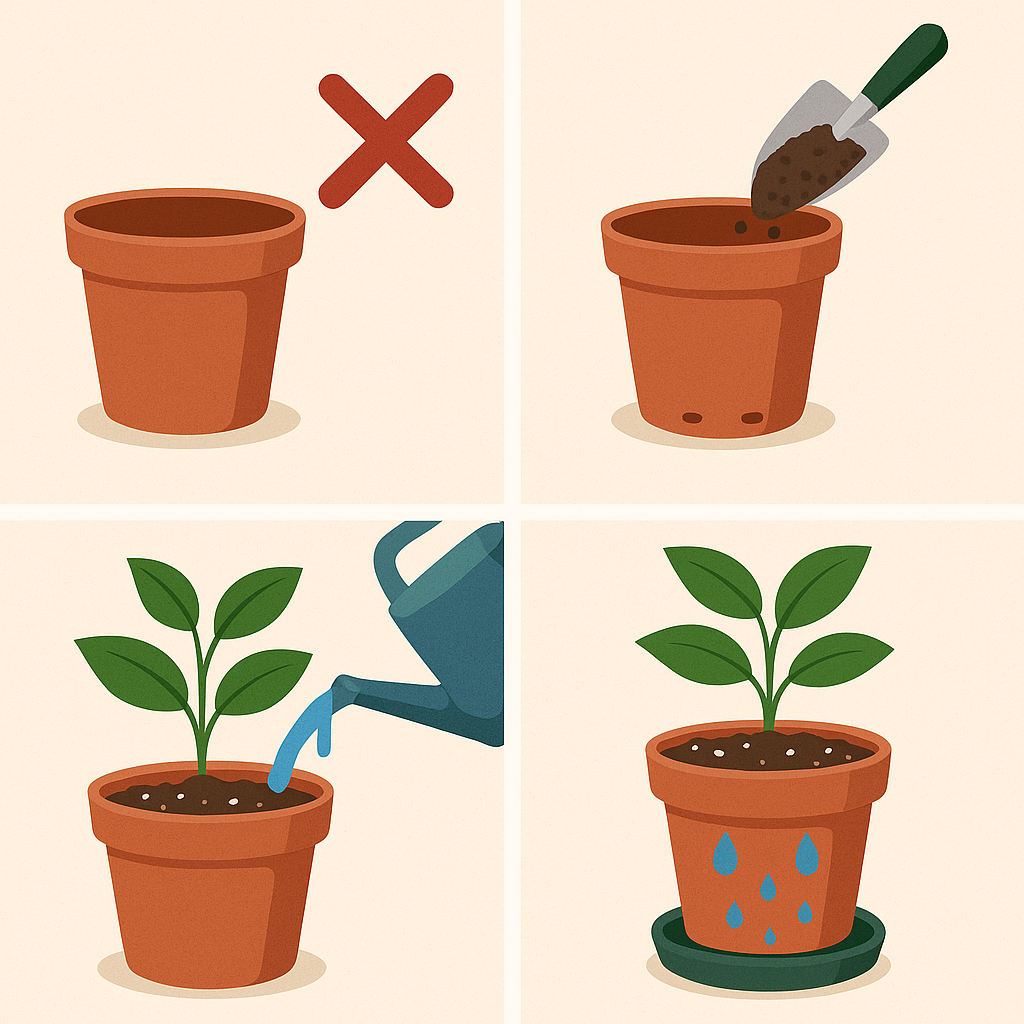When starting a garden, one of the most overlooked—yet critical—factors is soil drainage. Whether you’re growing herbs in containers or vegetables in raised beds, understanding what drainage is and why it’s important in gardening can make the difference between thriving plants and root rot. In this guide, you’ll learn the fundamentals of garden drainage, how to improve it, and why it’s essential for plant health.
What Is Drainage?
In gardening, drainage refers to how well excess water moves through the soil and away from plant roots. Healthy soil allows water to reach roots while letting the surplus drain out, preventing saturation. Poorly drained soil traps water, leading to root suffocation, fungal infections, and plant stress.
Why Drainage Is So Important
- Prevents Root Rot: When water can’t drain, roots sit in saturated soil and begin to decay.
- Supports Oxygen Flow: Roots need both water and air. Good drainage keeps air pockets in the soil.
- Reduces Fungal Growth: Excess moisture creates ideal conditions for harmful fungi and bacteria.
- Improves Nutrient Uptake: Properly drained soil allows nutrients to move freely to the plant’s roots.
Signs of Poor Drainage
- Water pools on the soil surface after watering
- Yellowing or wilting leaves despite moist soil
- Foul-smelling or soggy soil
- Stunted plant growth or blackened roots upon inspection
Common Causes of Poor Drainage
- Heavy clay soil
- Compacted ground
- Containers without drainage holes
- Overwatering or poor watering habits
How to Improve Drainage in Containers
- Choose pots with drainage holes at the bottom.
- Use a light potting mix (avoid dense garden soil).
- Add perlite, sand, or small pebbles to improve soil texture.
- Elevate pots slightly to prevent water from getting trapped underneath.
Improving Drainage in Garden Beds
- Add organic matter like compost to break up heavy soil.
- Use raised beds to control moisture levels.
- Double dig garden beds to increase aeration.
- Avoid walking on planted soil to prevent compaction.
The Role of Drainage Layers
In containers, some gardeners add a layer of gravel at the bottom. While this can help reduce standing water, it’s more effective to focus on using well-draining soil and ensuring your container has proper holes.
Drainage and Different Plant Types
Not all plants require the same level of drainage:
- Cacti and succulents: Need extremely fast-draining soil.
- Herbs and vegetables: Prefer moderate drainage with consistent moisture.
- Tropical plants: Like moisture but hate soggy roots.
Tip: Always research your plant’s specific moisture and drainage needs.

For more beginner-friendly tips, check out our guide on Organic Gardening at Home: Step-by-Step for Beginners.
Final Thoughts
Understanding what drainage is and why it’s important in gardening is a foundational skill for any gardener. With the right soil, containers, and watering habits, you’ll give your plants the best possible environment to thrive—without drowning their roots.
You can buy well-draining potting mix and containers with proper drainage here on Amazon.
